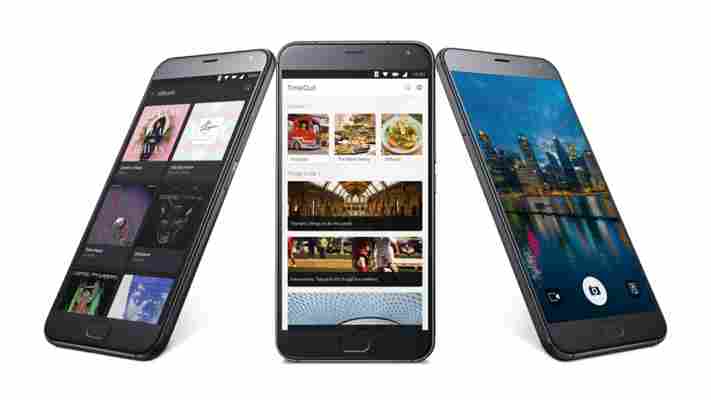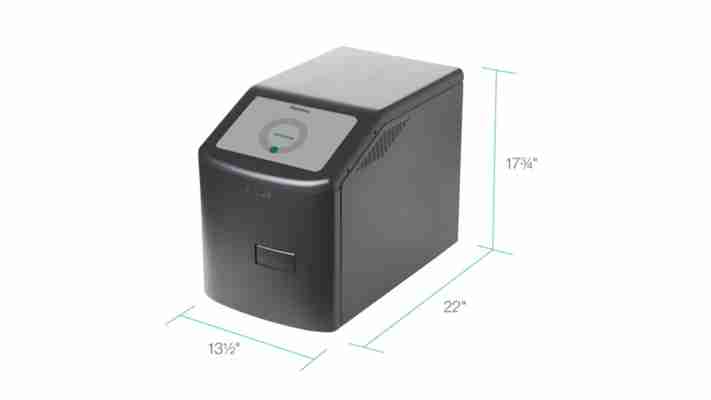New Ubuntu smartphone is the flagship rival Canonical said it didn’t care about
In the run up to Mobile World Congress (MWC) 2016, Canonical has released details of its next Ubuntu OS smartphone to come to market, and it offers the highest spec of any phone running the platform so far.

The Meizu Pro 5 Ubuntu Edition keeps with the existing trend of manufacturers repurposing existing devices to run Canonical’s OS – in this case the Pro 5 that runs Meizu’s own Flyme 5 OS , which is itself a fork of Android.
Hardware-wise, the Pro 5 is no slouch and the Ubuntu Edition will offer up a 1080p 5.7-inch Corning Gorilla Glass AMOLED display, Samsung’s Exynos 7420 octa-core processor (such as found in the Galaxy S6 Edge, Edge+ and regular S6 models), 21-megapixel Sony sensor for the rear camera and a fingerprint reader for biometric unlocking.
While Canonical says the phone will be available to pre-order during MWC, it hasn’t said how much it will cost or when it will arrive, but it will ship globally.
It’s not a device that delivers on the true convergence goals of Ubuntu – having one code base and device-agnostic apps – as it lacks the requisite ( MHL ) output to support connection to other devices, like a dock. Essentially, what that would allow is a custom UI for each use case, rather than a crude stretch-to-fit approach.
Nonetheless, despite not offering up this feature, Canonical is still planning on delivering this vision with future phones, as well as its recently announced tablet .
Perhaps the most surprising part of this announcement is the spec list of the device.
Both Canonical’s founder, Mark Shuttleworth, and its current CEO, Jane Silber, have told me that Ubuntu’s current range of devices aren’t really designed to be direct competitors to Android or iOS handsets – they’re aimed at early adopters and success isn’t measured in the number of million devices sold alone.
The way Shuttleworth sees it , they’re the best convergence devices available on the market.
The company still has a long way to go to convince a mainstream buying audience of Ubuntu’s mobile user experience – the ‘scope’ approach takes a little getting used to coming from rival devices – but if it can get the pricing right for this device, the hardware alone could tempt a few potential purchasers.
Read next: Shuttleworth says Ubuntu’s future is more exciting than space travel
India’s $4 smartphone will begin shipping next week
Earlier this year, a $4 smartphone meant for the rural Indian market was announced , sending waves throughout the industry. Believe it or not, it’s real — and about to start shipping.

The Freedom 251 is now set to start shipping on June 30 to those who pre-ordered the device. Built by India’s Ringing Bell, the phone sports some very ho-hum specs when compared to other devices — but it’s four dollars.
It has a 4-inch screen, and an 8MP camera around back (but a 3.2MP front-facing shooter for selfies!). An 1800mAh battery powers the 1.3GHz quad-core processor and 1GB RAM. There is also a mere 8GB storage.
When it was announced, the device drew a lot of side-eye looks for its price point. So much so it caused the India Cellular Association to lobby the country’s telecom minister to figure out how Ringing Bell was accomplishing the feat.
Speaking to The Indian Express , Ringing Bells’ Founder and CEO Mohit Goel says “We learned from our mistakes and decided to go silent untill we come out with the product. Now we have a 4-inch, dual-SIM phone ready for delivery. I feel vindicated.”
The $4 price-point is approximately RS 251, and won’t make Ringing Bell any money unless it’s wildly popular. Goel says there’s a RS 151 loss on each device, but is “happy that the dream of connecting rural and poor Indians as part of the ‘Digital India’ and ‘Make in India’ initiatives has been fulfilled with ‘Freedom 251’.”
Troubled medical startup Theranos unveils a new device for blood testing in remote locations
It’s been a shitty 2016 so far for Theranos: the medical company that claimed to be able to conduct a variety of tests from a single drop of blood had to void results that went back two years after they were found to be inaccurate. And last month, CEO Elizabeth Holmes was barred from operating labs for the next two years.

So naturally, when the company was slated to make a presentation at an American Association for Clinical Chemistry (AACC) expo, people expected Theranos to deliver new information about its testing methods. Instead, Holmes presented a new product called the miniLab , a 95-pound tabletop diagnostic tool for identifying a range of illnesses including Zika, using small samples of blood.
Theranos says that the miniLab consists of a robot that can dynamically perform tasks on samples that traditionally required manual processing, and can communicate remotely with the Theranos Virtual Analyzer to enable interpretation of the results in a lab at another location.
It’s hard to say if this is a big win for Theranos. According to AACC President Patricia Jones , the miniLab is only a miniaturized device that uses existing technology – so it may not exactly be a game-changer.
In addition, it is yet to be validated by the US Food and Drug Administration (FDA). That’s a major hurdle the company will need to cross before it can begin selling its new product, and its past record doesn’t indicate that it’ll be easy.
More importantly, Theranos has an uphill task ahead of it in earning back the trust of patients, doctors, and the medical community at large. It remains to be seen just how it will achieve that in the coming years, if it’s still around that long.
